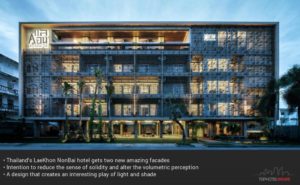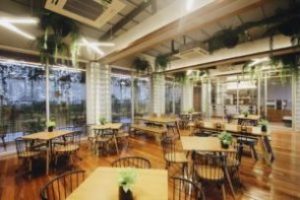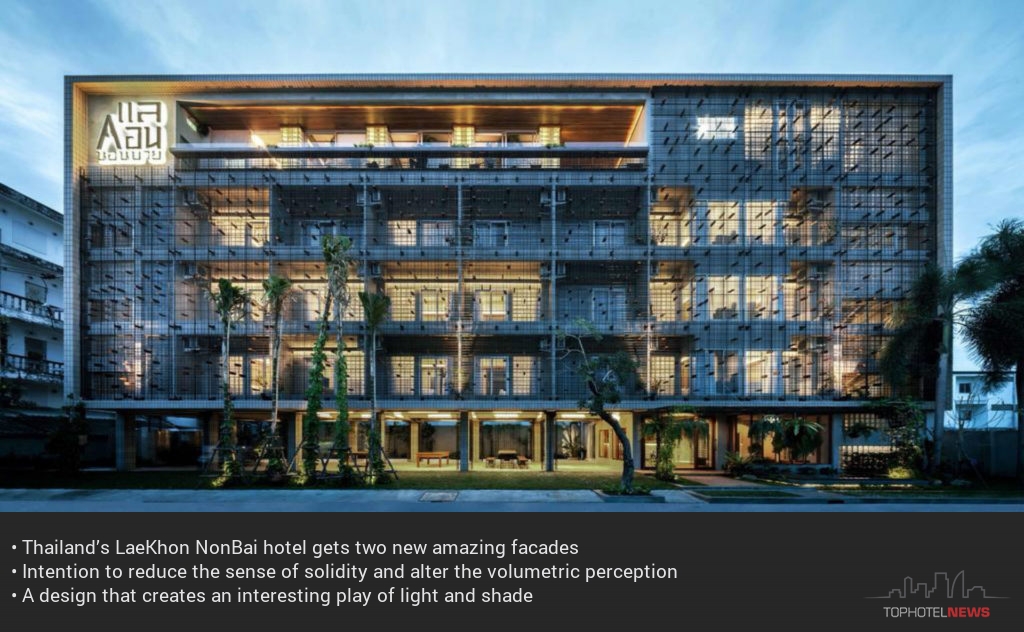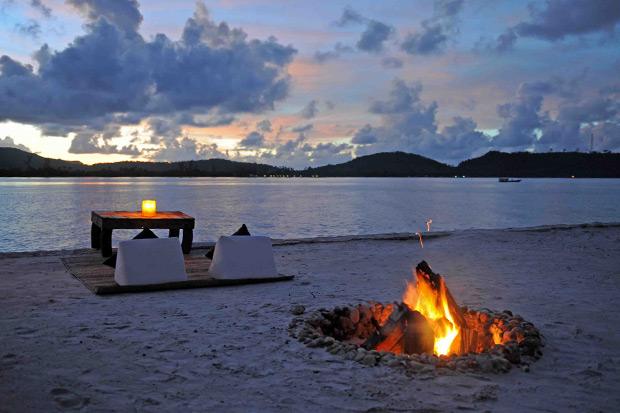 LaeKhon NonBai Thai hotel unveils breathtaking transparent facade
LaeKhon NonBai Thai hotel unveils breathtaking transparent facade
6 December 2018
An hotel in one of Thailand’s oldest cities has been designed with a transparent facade on one side and a perforated facade on the other to break up the volume and allow light into the interior. We check out the design of the LaeKhon NonBai hotel in Nakhon Si Thammarat by Jun Sekino Architect and Design.
New facades revitalise tired design
 The LaeKhon NonBai is a small, 20 unit hotel located in Nakhon Si Thammarat, one of the most ancient and historical cities in Thailand. Architectural firm Jun Sekino Architect and Design was tasked with taking the existing plans and structural drawings of the building and to create something a little more vibrant in the final realisation of the construction. The architectural drawings for the project were already completed, so the practice was able to play around with the front and rear facades, which are the most eye-catching features of the five-storey property. The architect’s aim was to alter the volumetric perception of the building, which was read as solid and impenetrable, without changing the structural integrity of the project. This was done by opening up the two main facades to allow them to be read as more porous by crafting see-through skins on each side.
The LaeKhon NonBai is a small, 20 unit hotel located in Nakhon Si Thammarat, one of the most ancient and historical cities in Thailand. Architectural firm Jun Sekino Architect and Design was tasked with taking the existing plans and structural drawings of the building and to create something a little more vibrant in the final realisation of the construction. The architectural drawings for the project were already completed, so the practice was able to play around with the front and rear facades, which are the most eye-catching features of the five-storey property. The architect’s aim was to alter the volumetric perception of the building, which was read as solid and impenetrable, without changing the structural integrity of the project. This was done by opening up the two main facades to allow them to be read as more porous by crafting see-through skins on each side.
Materiality and visual identity
 The architects were intending to reduce the sense of solidity of the large rectangular volume, and to play around with the repetition of the pattern on the facades, which are the main parts of the hotel visible to public. On the front facade, this involved treating the expanse of the wall with a lattice of round metal rebar, which echoes the raw construction materials that would have been used in the erection of the concrete framework. The rebar has been used in a decorative manner on the front facade, effectively placing a see-through skin in front of the main structure. This skin gives depth and silhouette to the facade, while at the same time allowing the units behind it to be animated, especially at night when the lights are on. This metal lattice also allows light into the interior, and creates an interesting play of light and shade during the day and at night. The lattice is interspersed with blocks of timber to break it up and provide a more weighty counterpoint to the lightness of the metal insertion.
The architects were intending to reduce the sense of solidity of the large rectangular volume, and to play around with the repetition of the pattern on the facades, which are the main parts of the hotel visible to public. On the front facade, this involved treating the expanse of the wall with a lattice of round metal rebar, which echoes the raw construction materials that would have been used in the erection of the concrete framework. The rebar has been used in a decorative manner on the front facade, effectively placing a see-through skin in front of the main structure. This skin gives depth and silhouette to the facade, while at the same time allowing the units behind it to be animated, especially at night when the lights are on. This metal lattice also allows light into the interior, and creates an interesting play of light and shade during the day and at night. The lattice is interspersed with blocks of timber to break it up and provide a more weighty counterpoint to the lightness of the metal insertion.
 The rear facade, by contrast, appears more enclosed and has a very different visually identity. On this facade, the architects have used a rhythmic pattern of the the concrete frame in-filled with sold brick panels vertically and more open, perforated panels with side-on brick in between them. The materials are also read as raw materials that have been used in the construction of the building, but are given new meaning by being used as a superficial and decorative cladding. The warmth of the brick relates also to the herringbone pattern of brick that is used on the floor in the circulation spaces outside the entrance to the units. There is a subtle mix of materials here, with the concrete structural frame holding an ornate timber doorway and threshold which marks the guest room entry, which is immediately confronted by the perforated brick panel opposite. Again, the treatment of the brick and the spacing between them allows for an unusual interplay between light, shade and material.
The rear facade, by contrast, appears more enclosed and has a very different visually identity. On this facade, the architects have used a rhythmic pattern of the the concrete frame in-filled with sold brick panels vertically and more open, perforated panels with side-on brick in between them. The materials are also read as raw materials that have been used in the construction of the building, but are given new meaning by being used as a superficial and decorative cladding. The warmth of the brick relates also to the herringbone pattern of brick that is used on the floor in the circulation spaces outside the entrance to the units. There is a subtle mix of materials here, with the concrete structural frame holding an ornate timber doorway and threshold which marks the guest room entry, which is immediately confronted by the perforated brick panel opposite. Again, the treatment of the brick and the spacing between them allows for an unusual interplay between light, shade and material.
A new hotel in Nakhon Si Thammarat, Thailand, uses raw materials to break up the volumes of the external facades.
Source:https://tophotel.news/hotel-in-thailand-breathtaking-transparent-facade/


